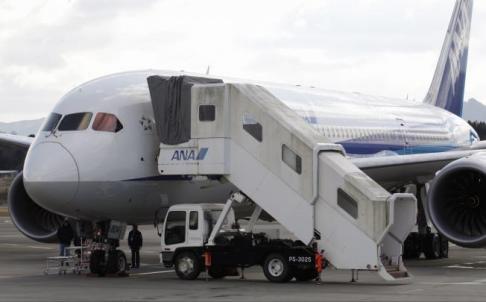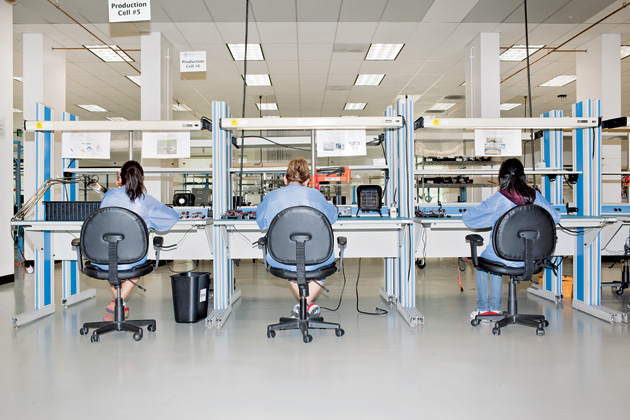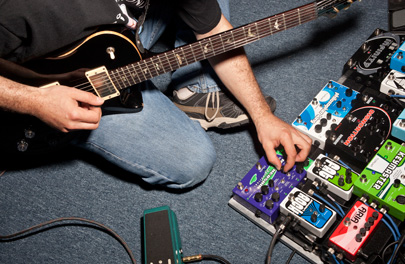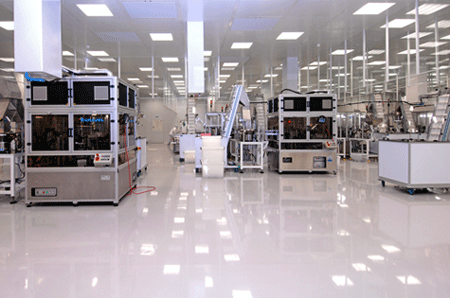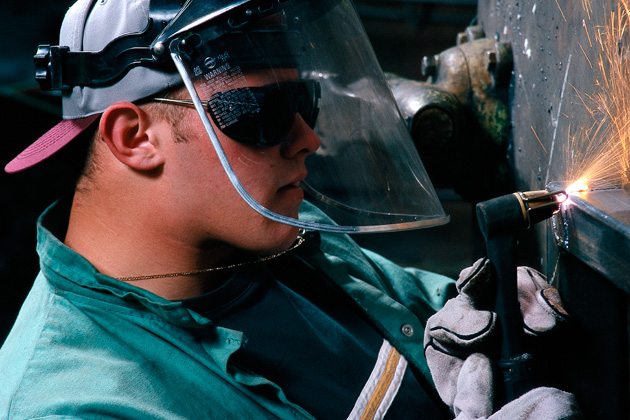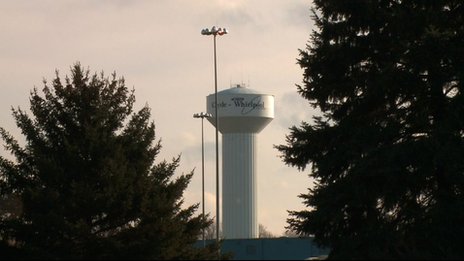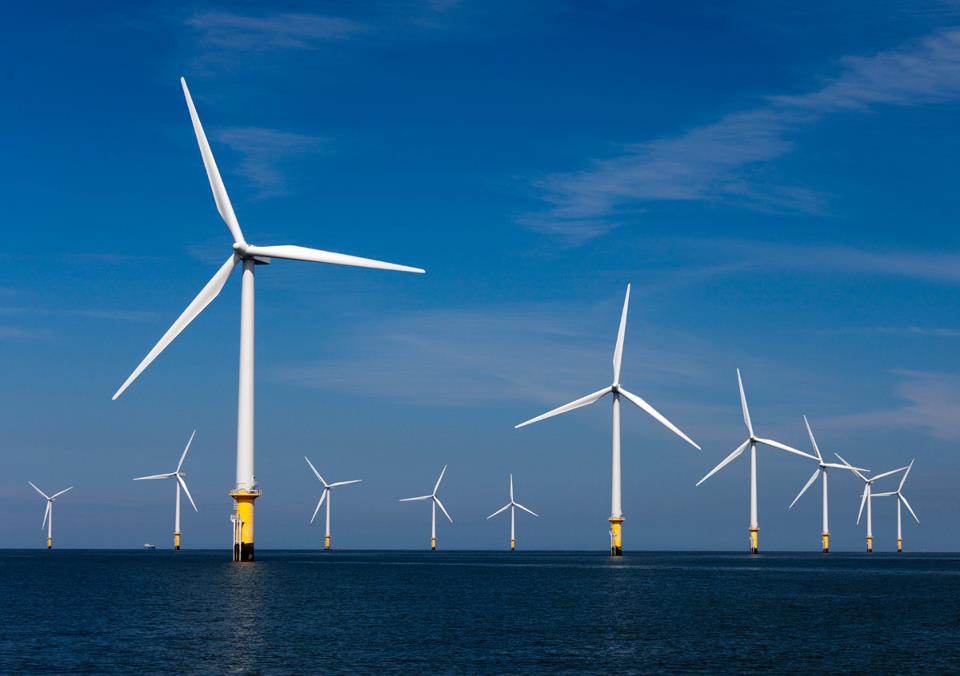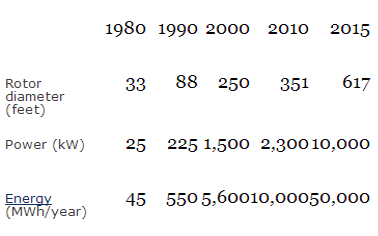
Peter Kelly-Detwiler
Contributor
January 2013

Photo: Blade Dynamics
Last month I visited the Wind Technology Testing Center in Charlestown, MA, just outside of Boston. With me were executives from American Superconductor (AMSC) and Blade Dynamics (BD). They were in Charlestown to observe the testing process of a new blade design that BD is working to commercialize. As we watched the blade being bent back and forth – we saw perhaps a few thousand of the two million movements the blade would undergo this month – these two execs gave me a good insight into the continually developing world of windpower and some of the trends we should expect to see in the near future.
What is clear is that we have come a long, long way from the 1980s, when Zond was developing the first big wind farm in Tehachapi,California, where 500 turbines generated a total of 40 MW. Today, the same amount of energy can be produced by approximately eight 2.5MW wind turbines.
The following table from AMSC gives one a good idea of the progress made in the last three decades, as well as the huge gains expected in the next three or four years:
While costs per kW have increased by a factor of twenty, productivity has increased nearly a thousand-fold, greatly reducing the kilowatt-hour costs. As a result, in the best onshore wind regimes in the US, southwestern Kansas, and the Texas panhandle, wind now costs less than three cents per kilowatt-hour.
The onshore resources are abundant in such locations, but they are far from energy-hungry populations. It has proved politically very difficult and costly to pass through the regulatory hoops to build transmission lines from the wind hotspots to the demand centers. For one $7 billion line being built to bring West Texas wind from to Dallas and other large cities, easement payments have ranged between $3,000 and $10,000 per acre, and there has been significant and time-consuming local opposition. Many of the high voltage transmission lines being proposed in other parts of the country to update our antiquated electricity grid could take decades to build. The federal, state, and local regulatory thicket is nearly impossible to navigate, and one failure in the process can kill the entire endeavor. This transmission constraint contributes further to the push to develop offshore.
Today, the typical onshore machine averages somewhere between 1 and 3 MW, and offshore machines are in the 3-4 MW range and getting significantly larger. The economics of offshore wind development necessitate scale. Constructing and maintaining turbines in remote and difficult offshore marine environments requires specialized technology, including specialized construction ships costing as much as $100 mm. As a consequence, the machines being built to harvest the steady offshore winds must have huge blade sweeps and big turbines to be economic.
The DOE is pushing a National Offshore Wind Strategy initiative to bring the costs of offshore wind to ten cents per kilowatt-hour for 10 gigawatts (GW – a thousand megawatts) of power by 2020, with an ultimate goal of 54 GW at a cost of seven cents by 2030. However, this won’t happen without a few major economic and technological developments. Both blades and turbines will have to get bigger and better.
Let’s start with blades. The bigger the swept area of the rotor blades, the more energy one can harness from the turbine. The relationship between the rotor size and the swept area is not linear. For instance, to increase the rotor diameter from 150 m (today’s largest blades) to 200 m (being developed by BD for AMSC’s 10MW offshore turbine) the blades will increase in length by 33%, but the swept area, which captures the wind energy, will increase by 78 (πR2) If you’re offshore then, you are looking at deploying blades that are as long as a football field. By way of comparison, a Boeing 747 is 64.4 m from wing-tip to wind-tip, less than one-third the size of a 10MW offshore turbine.

The technology challenge is obvious: these blades need to survive for decades in a highly punishing marine environment. Downtime is expensive. According to Tom Feiler of AMSC, the vessels and crews needed to repair out-of-service equipment can cost from $2,500 per day to upwards of $25,000 per day depending on the size and weight of the spare parts, and the conditions they have to deal with. Failure really is not a palatable option, as maintenance cost can destroy the economics of a wind farm.
This creates an interesting economic and technological challenge. In order to make wind energy cost-effective, one has to keep initial component costs as low as possible. Sandia Labs put it very well in a 2011 report on blade manufacturing: “Wind turbine blades have near aerospace quality demands at commodity prices; often two orders of magnitude less cost than a comparable aerospace structure. Blade failures are currently (listed) as the second most critical concern for wind turbine reliability.” The experience of Suzlon was eye-opening in this regard. Blade cracking issues resulted in a six-month remediation program costing in the tens of millions of dollars.
Here’s where Blade Dynamics eyes the future and believes they have a competitive advantage. Owned 20% by Dow Chemical and 20% by AMSC, and more recently, also by Energy Technologies Institute (ETI) a public-private partnership between companies including Rolls Royce, Shell, E.On, and the UK government, BD has a different approach to building blades. The typical approach is to lay out sheets of glass in an enormous mold and infuse it with resin. One challenge is to ensure that the application is uniform and without bubbles or dry areas which would result in ensuing weakness of the blade. The bigger the blade, the greater the potential challenge.
The second step, once you have created half the blade in the mold is to take the one “clamshell” and join it to the other with special adhesives, with a spar in the middle to improve strength. Since the development of these blades is essentially a process done by hand, the two clamshells are never exactly identical opposites. Thus, the joining often has imperfections as well. Just about every blade requires fixes of one sort or another.
In looking at the issue, Sandia Labs comments: “While the design and manufacturing of blades has improved, it is not clear that it has done so at a rate necessary to ensure a 20-year design life. Many of the blade suppliers are using technologies and techniques that were developed for structures with much lower design loads and criteria. While these methods are inexpensive, they are thought to offer questionable reliability.”
Sandia points to the issue of size as likely creating more failure, all other things being equal: “thick composite laminates have an increased likelihood of hidden flaws and multiple fla
ws being groupe
d in the same local area. A number of production related flaws may occur in larger structures which are more easily avoided in smaller structures…Other factors which are more likely in larger blades include fiber waviness, large scale porosity, large resin rich areas, and resin cure variations through the thickness…Moreover…larger structures have a greater probability of a critical flaw.”
Addressing this concern that bigger may not be better, Blade Dynamics brings a different logic to the game. Their goal is to bring quality control down to the micro level. Instead of laying out the blades as two single large components which are then glued together, with a spar in the middle, they create a series of smaller structures – in a more controlled environment – which they can quality check and then join together. The clamshells are not built as whole units that are joined, but rather as a series of modular pieces which wrap around a modular central spar as they go.
BD believes this not only gives them strength and consistent and reliable quality – which is what they were at the Wind Technology testing Center to prove – but flexibility as well. With the joined clamshell approach, a blade exceeding 50 yards is exceeding ponderous to move. On land there have been cases where highway exit ramps have been built just to accommodate wind turbine blades. In the case of Blade Dynamics, the sections can be moved in any specified length. Currently, the default standard is 40 feet – the length of a standard truck container. Backed by Dow Chemical, they hope to use this technology to challenge the big and established wind energy giants (Siemens, Vestas, Enercon, Gamesa, GE, and a small number of other highly capitalized players) in the offshore frontier.
ETI’s nearly $25 mn investment in BD, announced just this week, will add more wind to BD’s sails. ETI took a stake specifically to advance development of enormous carbon fiber blades (compared with traditional fiberglass construction) of between approximately 90 and 100 yards, for turbines in the 8-10 MW range. By comparisons, the largest blades currently turning offshore are just over 80 yards long in 5-6 MW machines. The goal is to accelerate development of prototypes and put them into production by the end of next year, with a reduction in weight of up to 40%. The lower weight reduces costs throughout the rest of the system, improving overall economics. BD’s smaller D49 Blade just won recognition as
The Best of the Best Blade of the Year by Windpower Magazine, among established competitors like Siemens and Vestas, so they may just have something here.
Now let’s address turbines. American Superconductor, for its part, sees a different and complementary challenge worth addressing. Bigger machines transmit more energy. However, big gusts of wind can transmit too much energy into the critical components (gearbox and generator), essentially destroying them. Gearboxes have traditionally been used to speed up the RPM from the rotor to the generator, but they are the weak link in the chain as you get larger. As a consequence, many manufacturers are going to wind turbines without gearboxes. However, torque then becomes a problem, requiring huge generators with heavy copper windings that may scale out in the 3-4 MW range. As AMSC’s Thomas Feiler puts it “you essentially have a locomotive on top of a very high tower.”
AMSC sees an advantage for their technology in this area, as their lightweight, superconducting ceramic wire can allow them to build machines which are both simpler and lighter. They are betting on their experience in designing and building electric motors for ship propulsion systems for the US Navy. For the sake of comparison, AMSC indicates in their literature that a 10 MW superconductor generator would have a nacelle-generator combination weighing approximately 420 tons, compared with a conventional direct-drive machine weighing over 800 tons. This reduction in size and weight would lower overall wind development costs, resulting in a lower overall delivered cost of electricity. They believe that the simpler more efficient design will also significantly reduce operations and maintenance costs. Modern wind turbines are designed to operate 24/7 for 20 years. A car, if designed for a similar duty cycle, would have to operate for more than 3 million miles.
Blade Dynamics and American Superconductor are two of a small number of US players competing for an industry estimated to be worth in excess of $100 bn annually until 2020, and getting even larger after that. The World Wind Energy Association estimates that there is currently 250,000 MW of installed wind capacity in operation today, growing at 15 – 20% annually.
Of this 250,000 MW, only a few thousand MW has been developed offshore, in Europe. There, 3,300 MW has been installed, 5,600 MW is under construction, 17,300 has been permitted, and an additional 115,000 MW is planned. Asia is also eyeing a huge push offshore. Pretty soon, wind developments will occur off US shores as well. The total estimated offshore wind potential for the US is 4,100 Gigawatts (GW), or approximately four times the size of the total US power system. The New England and Mid-Atlantic resource is estimated at just over 1,000 GW. There are still technical hurdles to be overcome in developing the massive blades and generators necessary to cost-effectively harness wind in the ocean. But for the wind industry, this may be the biggest prize yet to come.

